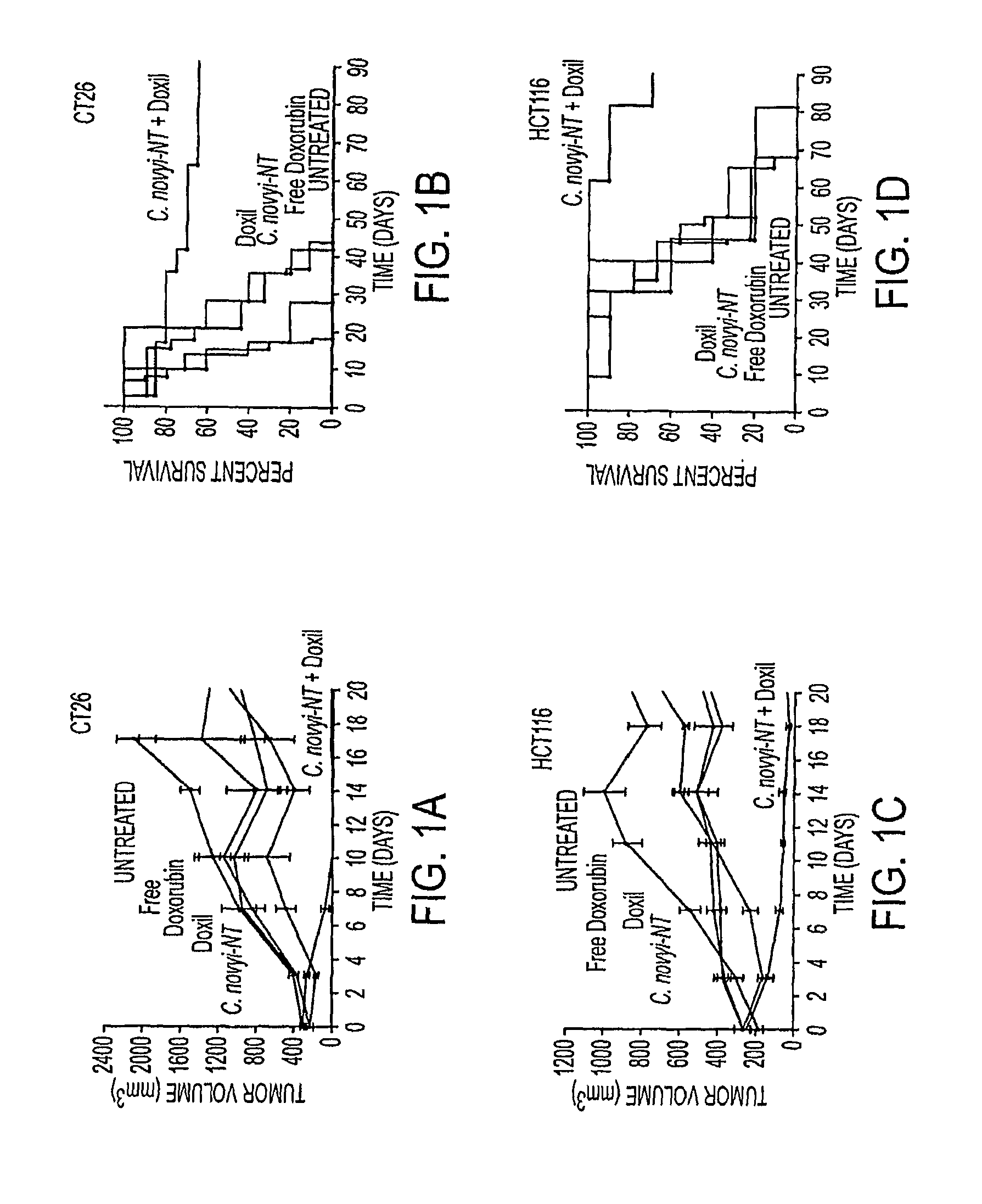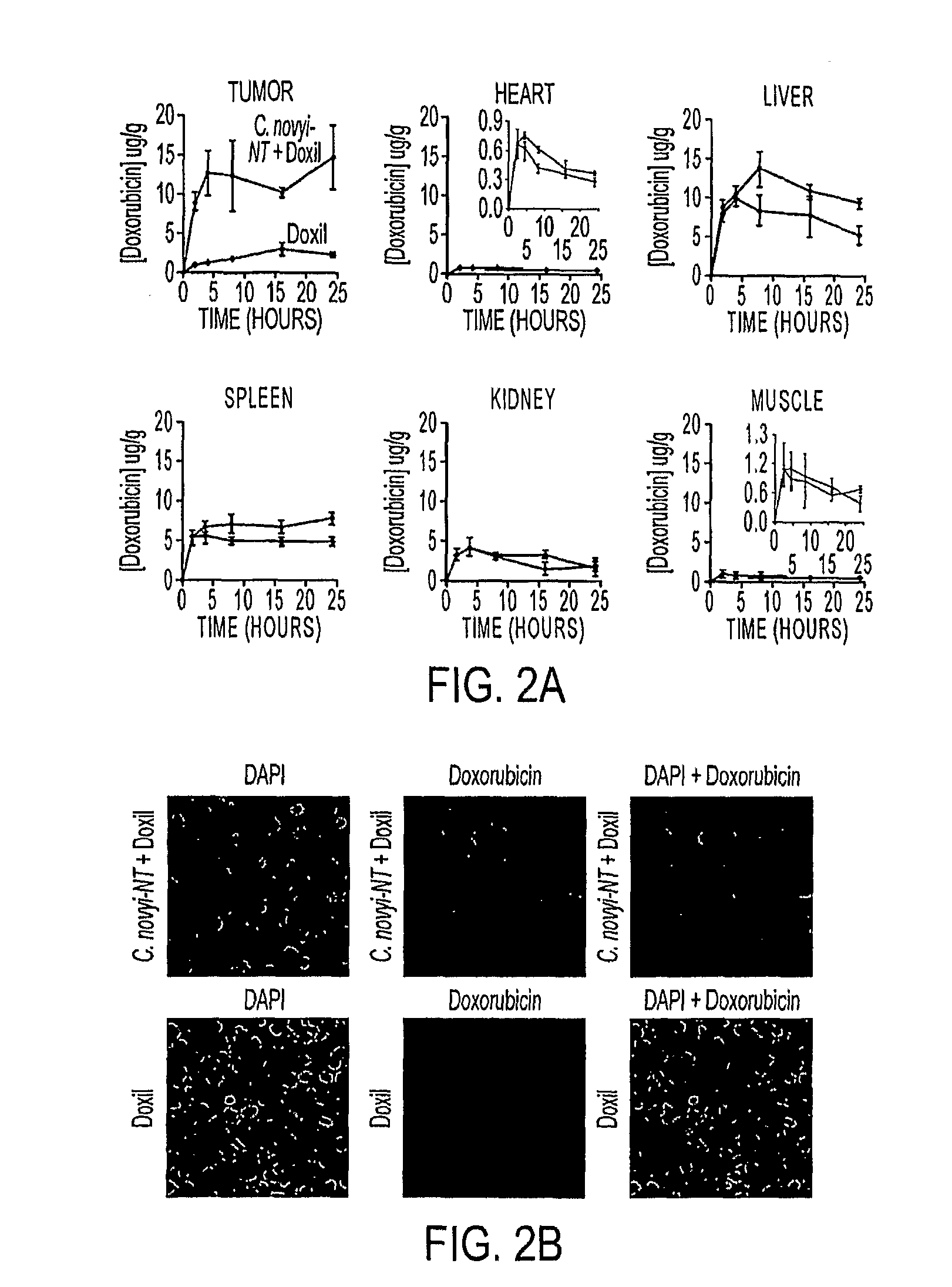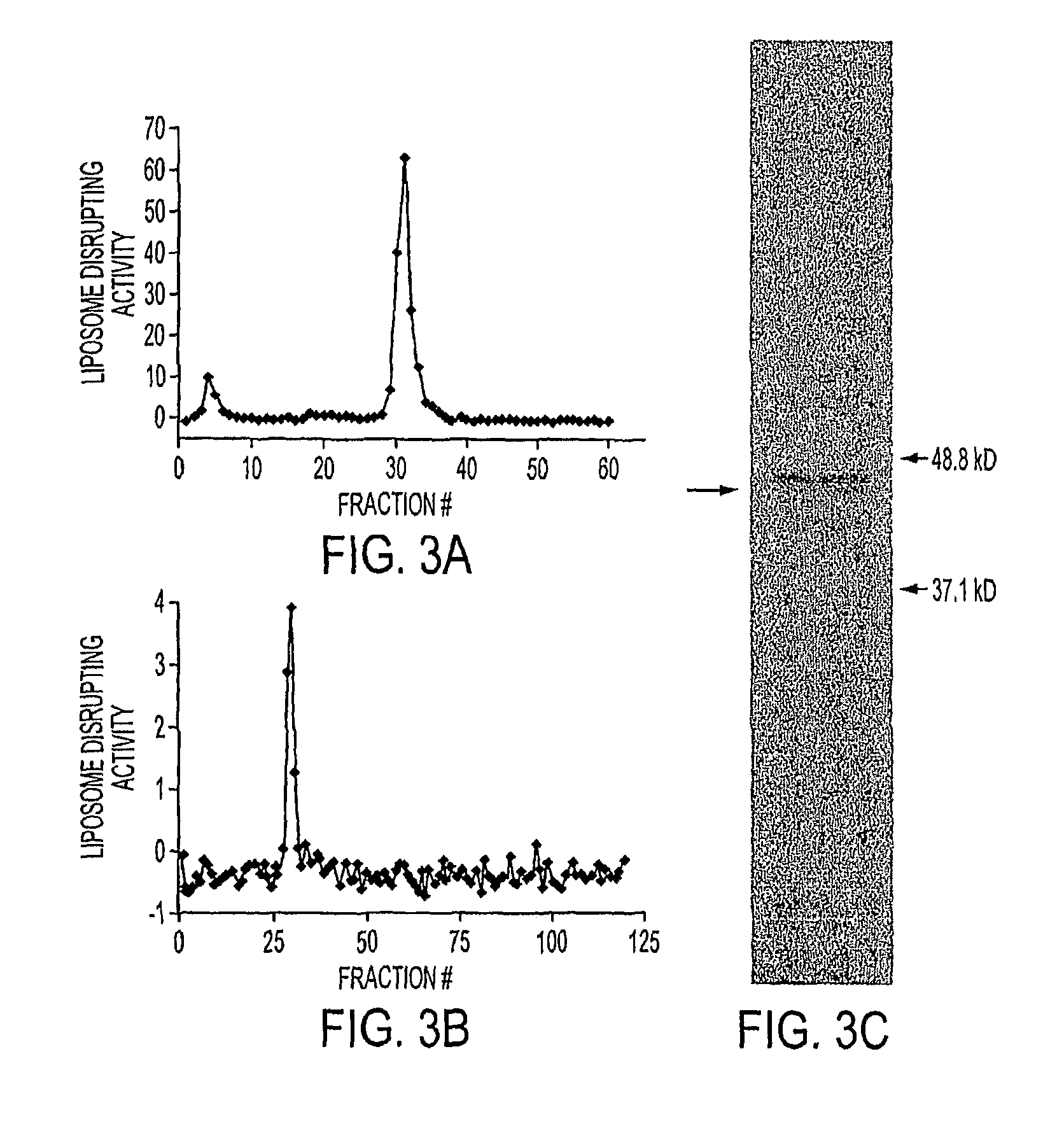Tumor specific delivery of therapeutic agents via liposomase
a technology of liposomase and tumors, applied in the field of tumor specific delivery of therapeutic agents via liposomase, can solve the problems of limiting the amount of safe drug administration, less therapeutic results achieved, etc., and achieve the effect of wide application
- Summary
- Abstract
- Description
- Claims
- Application Information
AI Technical Summary
Benefits of technology
Problems solved by technology
Method used
Image
Examples
example 1
Materials and Methods
[0038]Cell Lines. HCT116 (CCL-247, human colorectal carcinoma) and CT26 (CRL-2638, murine colorectal adenocarcinoma) were purchased from the American Type Culture Collection. Both lines were grown in McCoy's 5A Medium (Invitrogen) supplemented with 5% FBS (Hyclone) at 37° C. in 5% CO2
[0039]Reagents. Doxorubicin was purchased from Bedford Laboratories, Bedford, Ohio. PEGylated liposomal doxorubicin (DOXIL®) was purchased from Tibotec Therapeutics, Raritan, N.J. Chicken Egg L-α-Phosphatidylcholine (EPC), Hydrogenated Chicken Egg L-α- Phosphatidylcholine (HEPC), 1,2-Distearoyl-sn-Glycero-3-Phosphoethanolamine-N-[Methoxy(Polyethylene glycol)-2000] (DSPE-PEG2000) and Cholesterol (Chol) were purchased from Avanti Polar Lipids, Alabaster, Ala. Irinotecan HCl (CAMPTOSAR™) was purchased from Pharmacia & Upjohn Co., Kalamazoo, Mich. Calcimycin A23187 and Triolein were obtained from Sigma (St. Louis, Mo.). 1,2-dioleoyl-3-pyrenedecanoyl-rac-glycerol (DPG) was obtained from...
example 2
Spores Plus Liposomes In Vivo in First Model
[0052]We used syngeneic CT26 colorectal tumors in BALB / c mice. C. novyi-NT spores were injected intravenously, and once germination had begun in the tumors (˜16 hr after injection) a single dose of Doxil, at 10 mg / kg, was administered through the tail vein. Doxil is a liposomal formulation which encapsulates doxorubicin, a DNA-damaging agent and widely used chemotherapeutic agent. Liposome-encapsulated doxorubicin has been shown to result in improved outcomes compared to unencapsulated doxorubicin in a variety of experimental and clinical studies (18-21). The liposomes in Doxil are surface modified by PEGylation to increase their circulation time (18). As previously documented (11, 12), treatment with C. novyi-NT spores alone resulted in germination and necrosis within the centrally hypoxic region of the tumor, but left a well-oxygenated viable rim that eventually regrew (FIG. 1A). Neither doxorubicin nor Doxil alone resulted in prolonged ...
example 3
Spores Plus Liposomes In Vivo in Second Model
[0053]To determine whether these pronounced anti-tumor effects could be observed in other tumor model systems, we treated human colorectal cancer xenografts [HCT116] growing in nude mice in the same way. As shown in FIGS. 1C and D, C. novyi-NT spores, when used in combination with Doxil, resulted in HCT116 tumor regressions similar to those observed with CT26 tumors. The dose of liposomal doxorubicin used in these tumor models was matched to those currently used in the clinic to treat cancer patients (19-21).
PUM
| Property | Measurement | Unit |
|---|---|---|
| time | aaaaa | aaaaa |
| size | aaaaa | aaaaa |
| pH | aaaaa | aaaaa |
Abstract
Description
Claims
Application Information
 Login to View More
Login to View More - R&D
- Intellectual Property
- Life Sciences
- Materials
- Tech Scout
- Unparalleled Data Quality
- Higher Quality Content
- 60% Fewer Hallucinations
Browse by: Latest US Patents, China's latest patents, Technical Efficacy Thesaurus, Application Domain, Technology Topic, Popular Technical Reports.
© 2025 PatSnap. All rights reserved.Legal|Privacy policy|Modern Slavery Act Transparency Statement|Sitemap|About US| Contact US: help@patsnap.com



